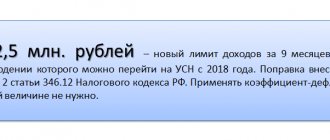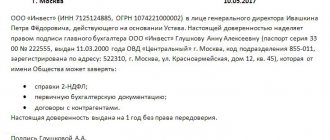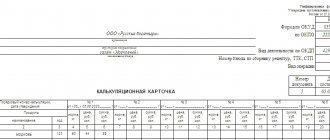04 December 2021
From January 2022, a VAT exemption for public catering establishments will come into effect. Another relaxation is also provided for the industry - reduced insurance premium rates. Instead of 30%, catering will calculate them at a rate of 15%. For those who prefer to understand tax changes by studying official documents, we provide appearance passwords: Bill No. 1170972-7 and Federal Law No. 305 of 07/02/2021. And now more about the innovations and what needs to be done now in order to take advantage of tax breaks in 2022.
Who can live well without VAT?
Let's start with the fact that the above-mentioned changes in tax legislation will not be relevant for all enterprises in the industry and not for all individual entrepreneurs. The provision of catering services through cookeries, snack bars, fast food outlets, canteens, cafeterias, cafes, bars, and restaurants is exempt from VAT. Exceptions, of course, are also provided. VAT will have to be calculated and paid as usual for retail businesses that have culinary departments. Also, tax breaks do not apply to individual entrepreneurs and enterprises engaged in procurement activities. That is, the sale of semi-finished and finished products in culinary departments at retail enterprises is not exempt from VAT. Such taxpayers also cannot apply reduced rates of insurance premiums.
Features of taxation in catering organizations
Various taxation systems, including their combinations, can be applied to catering organizations. If the area of the enterprise service hall is not 150 square meters, then UTII may be used. This area must include the size of all premises used for catering, not counting utility rooms, warehouses and other premises that are not directly intended for serving the buyer.
If an enterprise chooses a single tax, then it replaces a whole group of payments - VAT, income tax, property tax, unified social tax. Moreover, if an organization carries out several types of activities, its responsibilities are to maintain separate records of funds and their sources for each type individually.
The amount of tax in a catering organization that uses UTII is determined by multiplying the base profitability by adjustment factors and the area of the premises. It should be borne in mind that the transition to a single tax does not relieve the taxpayer of the obligation to maintain accounting records.
Isn't it time for us to count...
Let's move on to the conditions that will allow you to take advantage of tax benefits. We ask accountants of catering enterprises to pay special attention to them. It is on your shoulders that the calculations will fall, allowing you to understand whether the conditions provided for by Federal Law No. 305 are met or not. So, in order to take advantage of the VAT exemption next year, you now need to calculate: • the share of core income (minimum 70%); • annual revenue - (threshold - 2 billion rubles). It is also worth checking whether payments in favor of workers employed in public catering correspond to the regional average monthly salary in the industry. If all conditions are met, the enterprise or individual entrepreneur can count on tax benefits. Checking a business according to the above criteria is not a quick process. Someone will probably wait for the audit and annual reporting. And someone will figure out now what is going on with the revenue and the share of income from catering. Are you going to do the calculations? Please note one important point. The federal law mentioned above, which introduced tax benefits, refers us to chapters 26, 25 and 23 of the Tax Code of the Russian Federation. He does not specify individual articles. Accordingly, when calculating annual income, it is necessary to take into account both revenue from the sale of goods and non-operating income. The salaries of workers employed in public catering also need to be calculated for the year. The indicator of interest is the average monthly payment amount. It is calculated simply: the amount of accrued remuneration and payments for the period, divided by the number of employees in the relevant sector. Important: only those employees with whom employment contracts have been concluded are taken into account. The resulting indicator is compared with a similar regional industry indicator (according to OKVED). The information is freely available on the Rosstat website. If a public catering enterprise is just being created, accounting is at the organization stage, naturally, no preliminary calculations are needed. You can apply VAT exemption and use a reduced insurance premium rate by default. For such a business, there is one criterion for applying benefits - compliance with the type of activity. Returning to checking compliance with the conditions for VAT exemption by existing catering enterprises, we note that the tax office will check each benefit recipient. Technically, this will be a comparison of data on average monthly payments with information from the DAM, which is submitted by the individual entrepreneur or company quarterly. As for the types of activities, the check is carried out according to OKVED 56. If you have already made the necessary calculations and it turns out that the conditions have not been met, you will not be able to take advantage of the VAT exemption from next year. The next possible option is in a year. A quarterly review of the conditions for applying tax benefits will be introduced in 2024. And in this case, the number one indicator is the size of average monthly payments to employees.
Organization of accounting at catering enterprises
The Interstate Standard (GOST 30389-2013) includes the following types of enterprises as catering structures:
- restaurant complexes;
- cafe;
- bars;
- all types of canteens;
- pantry;
- cafeterias;
- fast foods;
- culinary departments in stores and shopping centers.
Two situations. The first concerns the income of waiters (maids) who receive tips from customers. Should he be subject to personal income tax if the client transfers tips using electronic services? The second affects employees of the organization (including business travelers) who held business meetings in a restaurant due to official needs. Can tips be included in hospitality expenses? Is it necessary to include the amount of tips in the personal income tax tax base if the employee is reimbursed for travel expenses for the amount of tips paid in a restaurant? Will the situation change if tips are included in the bill? View answer
Accounting regulation is carried out by legal acts common to all business entities. Companies are given the right to develop their own methods and algorithms of action within the framework of current legislation. They are fixed by the accounting policy, which is formed after the registration of the enterprise.
In the process of carrying out economic activities, it is necessary to focus on:
- Government Regulation No. 1036, dated 08/15/1997
- Methodology for accounting for raw materials and marketable products, approved by Roskomtorg on August 12, 1994 (document number 1-1098/32-2);
- Order No. 260 dated November 13, 1986.
What features should be taken into account when purchasing food products and catering services in accordance with Law No. 44-FZ ?
Primary documents
The document flow system is based on two categories of primary forms: unified and independently developed. Cash documents and other samples of primary general purpose documents are drawn up according to legally approved templates. Highly specialized documentation can be created taking into account the specifics of the enterprise.
Catering organizations use:
- Cost cards for each dish from the menu, showing the cost of the raw materials used per 100 servings.
- Menu plans reflecting the entire range of information about the dishes offered and their composition.
- Invoices for the release of commercial products from warehouses. Without them, it is impossible to distribute food to the kitchen and bar.
- Acts in case of damage to food, broken dishes or scrap of furniture and equipment.
- Acts for issuing food from the kitchen.
- Reports on the movement of containers and products within the kitchen.
- Order invoices, which are necessary to record advances received from clients. This type of document is intended to initiate prepayment by the customer of a major event.
REMEMBER! Calculation cards must be endorsed by the head of the company.
NOTE! Drawing up a menu plan is the responsibility of the chef, but the director must certify the document with his signature.
Accounts used
To reflect expense transactions in accounting, 20 and 44 accounts are used. Finished products are shown in account 43, and goods - in account 41. Revenue receipts in the amount of sales are entered in account 90. It is possible that an enterprise does not use account 43, but is limited to using code 20.
Typical correspondence for accounting of material assets:
- D41 (10) – K60 reflects the receipt of goods or raw materials;
- when making a purchase by a company employee (accountable person), 41 or 10 accounts are debited, and 71 are credited;
- D21 – K10 – semi-finished products are transferred to the kitchen for processing;
- D20 – K21 – processed semi-finished products are transferred to the production of finished products;
- D90 – K20 – the price of used semi-finished products is written off as cost.
IMPORTANT! Inventory and materials of a catering enterprise must be shown in accounting at the actual cost price, which consists of the price announced by the supplier and additional overhead costs incurred (clause 5 of PBU 5/01).
Expense transactions can be reflected by debiting account 20 and forming credit turnover on accounts 10, 41, 70, 43, 69, 02. Proceeds from the sale of a finished dish involve crediting its amount to account credit 90 and simultaneously posting it to debit 62. The fact of receipt of money is reflected by the entry between D50 and K90.1. If the client paid with a bank card, then it is necessary to create a set of transactions:
- D57 – K90.1 – fact of receipt of revenue;
- D51 – K57 – when transferring money to the organization’s current account;
- D91 – K57 – the amount of the banking organization’s commission for making the payment.
If, as a result of the inventory, spoiled products or broken dishes were identified, then their cost is written off to the debit of account 94 (from the credit of account 10 or 41). The next step will be to identify the person at fault and assign the recorded amounts of damage to him - D73 and K94.
Tax accounting
Catering enterprises have the right to choose a general taxation system or one of the special regimes. More often they choose the simplified tax system or UTII to avoid additional difficulties taking into account value added tax. The choice of a special tax regime is influenced by the total area of the sales floor.
FOR REFERENCE! To switch to UTII, the sales floor area must be within 150 square meters. m. This indicator includes premises that are used to provide food services. Storerooms and storage rooms, utility rooms are not taken into account.
If preference is given to UTII, then there is no need to calculate VAT or income tax. The accountant takes the income base as a basis, multiplies it by the adjustment factor and the area of the customer service area.
EXCEPTION! Catering does not recognize the specialization of companies selling finished products through vending machines.
When choosing a simplified system, you can establish the tax base in the sum of all income receipts or in the amount of profit (income minus expenses). The tax rate will depend on the tax base indicator. In this case, it will be necessary to maintain a book of accounting for income and expense transactions.
Necessarily? Profitable?
Let's discuss two more important issues: the benefits of VAT exemption and the mandatory use of tax benefits. The manager will most likely come to the accountant with these questions. So, in order. Exemption from VAT will be beneficial for catering enterprises that do not use the simplified tax system, operate on OSNO, and purchase products for processing from suppliers who are not payers of the mentioned tax. Such companies pay VAT on the entire cost of services sold. Accordingly, the exemption will significantly reduce the tax burden. For those who work for the simplified tax system and are not tax payers, the benefits are irrelevant. As for tax accounting, subject to the application of the exemption, it is simplified. But in general, the benefit will reduce the burden on accounting departments slightly. Now let’s talk about whether it is necessary to use the exemption if all conditions are met. The new benefit for public catering is prescribed in Art. 149 of the Tax Code of the Russian Federation. It is not included in the list of mandatory use. Formally, this means that an individual entrepreneur or company has the right to refuse VAT exemption. To refuse, a corresponding application is submitted to the tax office. We draw the attention of accountants to the fact that a refusal can be issued from any quarter. The application must be submitted to the Federal Tax Service before the 1st day of the quarter from which the VAT exemption will not apply.
As it was before
Small cafes and restaurants using the simplified tax system were guided by the general rules for the simplified tax system:
✅ For businesses with annual income up to 150 million rubles . and staff of up to 100 employees used basic rates (5% for the simplified tax system - “Income” and 15% for the simplified tax system - “Income-Expenses”) or regional tax rates if local legislation established a benefit.
✅ For a business with an income in the range of 150-200 million rubles . rates increased to 8% and 20%, respectively, and no more than 130 people could be hired.
If things went so well that the annual income exceeded the threshold of 200 million rubles. - the enterprise automatically flew from the simplified tax system to OSNO. And then there’s VAT... It’s reasonable that the entrepreneur would be tempted to “split up” the business, and this is not entirely legal.
SMEs and more
Above we mentioned the benefit in the form of reduced insurance premium rates.
Note that not only medium and small businesses can use it. Special conditions are provided for catering. Reduced tariffs, subject to other conditions (relevant for VAT exemption), can be applied by enterprises with an average number of employees of more than 250 people. That is, large businesses can actually count on benefits. True, formally it will be classified as average. In terms of the number of employees, the limit for catering has been increased to 1,500 people. Corresponding amendments have been made to the law on SMEs. Important: in order to take advantage of the benefits, all conditions must be met (both in terms of revenue, and in terms of wages corresponding to the average monthly in the industry, and in terms of the number of employees). It is up to you to decide whether to take advantage of the VAT exemption or not. If the benefit is relevant, hurry to make the appropriate calculations and check that all indicators comply with the established limits. If you are opening a new business and organizing accounting, evaluate the benefits of working with VAT and without VAT, taking into account whether your counterparties are tax payers. Do you have questions about the application of benefits, calculations, specifics of tax accounting when calculating and paying VAT or tax exemption? Seek advice from specialists!
Tags for this publication:
VAT accounting by industry
Taxation of cafes and restaurants
Most restaurateurs choose the simplified taxation system “Income minus expenses” or the basic taxation system. It often happens that the business is so large that there is really no choice, because the threshold value for annual revenue is 150 million rubles and, if the establishment brings more, it will no longer be possible to choose the simplified system, you have to switch to the main one.
USN “Income minus expenses”
This regime is chosen to reduce the tax burden. When the share of income, namely net profit from total revenue, is up to 30%, this is really profitable. Why pay 6% of revenue when you can pay 15% of net profit and save?
But there is also a downside to this form of taxation: the additional burden of accounting. Payments are made using both the cash and accrual method. That is, you will have to count not only income.
To accept the cost of purchased goods as expenses in tax accounting under the simplified tax system “Income minus expenses”, three conditions must be met:
- The goods have been received (ownership rights have been transferred with supporting documents: invoice or deed).
- The goods have been paid to the supplier.
- The goods are shipped to the buyer (usually issued by an invoice or an acceptance certificate).
All three conditions must be met in order to include the cost of purchased goods as expenses.
For example, a cafe bought bottled beer from a supplier → sold it to a guest in the establishment → received money.
If you follow the logic, here they are - expenses and income, since the establishment did not produce anything, but only resold the goods.
But buying beer will only be an expense if the cafe has already paid the supplier for the supply. Often, suppliers have conditions with a deferred payment for a month or even three - in this case, there was no settlement with the supplier, and therefore no expense.
In this case, the establishment only has income. At the time of payment, the supplier needs to make an entry in the book of expenses and income that payment for this particular product has been made. It is quite difficult to keep this in mind all the time, so this type of accounting requires additional equipment, at least an accounting system.
It is also worth considering the fact that the goods were received according to the invoice. Because another unpleasant situation may arise for the restaurateur. For example, you are making payments to suppliers, but have not yet received the goods, and you are selling goods from old stock to guests. In this case, payment and receipt of goods cannot be considered an expense until it is sold. This applies not only to goods, but also to ingredients for semi-finished products: only at the time of shipment (sale) of finished products to a guest can you record this as an expense.
When choosing the simplified tax system “Income minus expenses”, it is important to hire a qualified accountant who works with software that allows you to track all changes in items, identify their costs and check compliance with the conditions.
In Finguru there are specialists with experience in tax accounting in public catering who will relieve you of the need to constantly keep a bunch of data in your head.
Calculate the cost of our src=»https://fingu.ru/upload/medialibrary/c8f/kakuyu-sistemu-nalogooblozheniya-vybrat-dlya-kafe-i-restorana-07.jpg» class=»aligncenter» width=»1000″ height=”347″[/img]
Basic tax system
As for the main tax system, the net accrual method is used. There is no need to monitor cash flows - just report on the movement of goods.
For example, you received goods according to an invoice, entered them into the warehouse and sold them to a guest. At this moment, revenue, cost, and write-off as expenses occur simultaneously. It doesn’t matter whether you paid the supplier, the goods always go to cost at cost.
On the main system you also need to pay VAT. It is included in the price of goods, and the establishment will only count as the difference between the incoming and outgoing values of this percentage (from 2022 - 20%). That is, this is a percentage of the tax from the purchase price and the same percentage from the selling price.
With us, you won’t have to understand the nuances of taxation of public catering enterprises.
Develop your business, and Finguru will help you with accounting and timely submission of reports! Calculate the cost of service!





